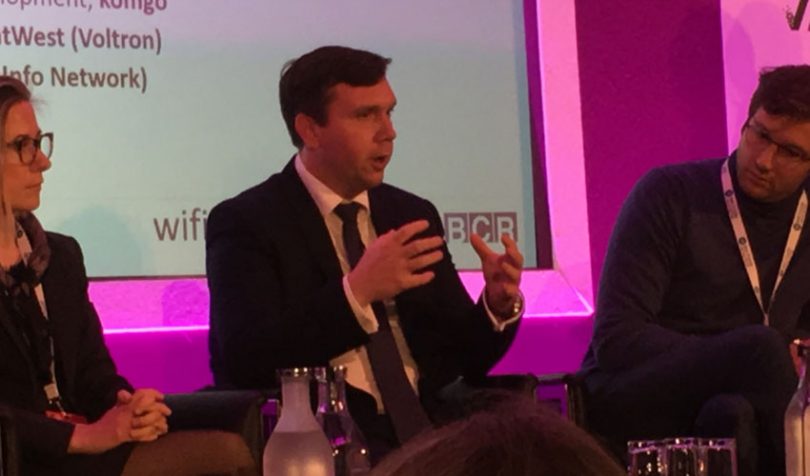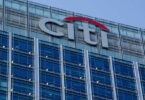At this week’s Consortia 2019 conference for blockchain trade finance, there was talk that the sector is in the “trough of disillusionment” in Gartner’s Hype Cycle. The four blockchain consortia – komgo, Marco Polo, Voltron and we.trade – face several headwinds. The first is the difficulty of operating a consortium, especially with bank participants. Another is the delicate balance of establishing standards without stifling competition or accelerating commoditization. And for the two consortia in the “soft” launch stage, we.trade and komgo, there’s the urgency of getting traction.
While unbridled enthusiasm is a thing of the past, the tone of the event was still upbeat. However, the word “pragmatism” was mentioned often.
Before exploring the challenges, it’s worth establishing the goals of the consortia. Andrew Speers from Natwest (part of Voltron) was forthright. “The system is broken,” he said. “SWIFT hasn’t done anything other than GPI in 25 years. We as an industry have an obligation to solve these problems for corporates because we’re facing huge disruption from people who are making their lives much easier.”
Each consortium has a different market position, but they all aim to digitize the trade process and reduce the battalions of back office staff manually processing paperwork. So a major target is cost savings. That extends to the cost of software development being shared by numerous banks. Another benefit is improving trust in the data.
“If we can have the information from the logistics provider about the trade transaction from port A to port B. That is worth much more to us as banks, from a compliance perspective, from a risk perspective, than if we only had a copy of the transport document,” said Valerie von Lucke from Commerzbank (part of Marco Polo). Unlike email, by using blockchain, the source of the data can be verified. And depending on the levels of integration, there could be several additional data points which reduce the risk of errors and fraud.
Once you have the trade assets sufficiently digitized, trading in the secondary market becomes easier than it is today.
There was a comment from the audience that the consortia seemed to be focused on the current pool of credit rather than expanding the pool, potentially by using standards. Santander’s Fernando Lardies who co-chairs we.trade commented that there are two horizons. The first is to improve existing products. And the second is data-driven. New sources of data not available today will enable the creation of different risk profiles and hence, expand the pool.
On a similar note, Baptiste Audren, komgo‘s Head of Product and Business Development, commented: “We need to be pragmatic. We can all dream of a world with a lot of data. The real question is: How do you start? Pragmatically, getting flows, getting volumes, getting live transactions.”
Audren described a situation where komgo’s live transactions were stalled over the issue of standards.
Standards versus competitive differentiation
Ten banks invested in komgo including ING, Societe Generale and ABN AMRO, as well as Shell and other companies in the oil sector. It has a sister company, VAKT, which deals with oil post-trade. So its first product was very focused, targeting Letters of Credit for Brent crude.
Audren commented: “We went to standardization in order to support VAKT volumes. And actually, we realized standardization is not possible.” Even though komgo is in the soft launch phase and has several live transactions, the unwillingness of the shareholders – who are its customers – to adopt standard Letters of Credit temporarily halted progress.
The issue is that that most of the companies have custom clauses in their Letters of Credit contracts. komgo’s technology partner is ConsenSys, and they’re considering adopting ConsenSys’ OpenLaw a blockchain-based “smart legal contracts” platform. The problem is being addressed, and komgo expects to continue the roll out in a matter of weeks.
Voltron which plans to launch later this year also digitizes Letters of Credit but not just for commodities. Early on, Voltron encountered the same issue of customization and took a different approach. They have a core set of shared features, and then each party can have a template with custom fields.
The irony is it would be helpful to have a standard approach to dealing with non-standard data. The same challenge of customization is being addressed in each network with two different technical approaches. If one wanted the two networks to interoperate at a detailed level, it would be painful.
So there’s a need for standards for data, governance and interoperability. Marco Polo and R3 initiated a blockchain trade standards body, Universal Trade Network (UTN). The aim is to encompass the entire trade ecosystem across technologies and consortia and including the transport and logistics sectors and consortia as well as customs.
Consortia versus startups
Despite komgo’s standards setback, Audren believes it has an advantage compared to some of the other consortia. “We are not democratic,” said Audren. “We are not a consortium. We are a startup with a CEO and CTO who take decisions and which allows us to move fast. I think this is the right way to do it. We do have a board of shareholders to orientate, but I think you need to be pragmatic.”
The other consortium that has incorporated is we.trade. But to date, it has never had a CEO. Roberto Mancone was the founding COO and was recently replaced by a new General Manager Ciaran McGowan as it transitions to the commercialization phase, signaled by the public rollout by member bank Nordea.
we.trade co-chairman Fernando Lardies noted the challenge of consortia. “There has to be a difficulty in what we are doing in that we are not there [yet], even though we are one, two, three years down the road in the consortium.” He added: “It’s hard enough with one bank between IT and operations and cybersecurity and product. If you have a number of institutions, it’s even harder.”
Andrew Speers from Natwest (Voltron) also referred to a three to five year gestation period for consortia and commented that banks need to appreciate that timeline when they get involved. “Consortiums are tough. It’s really hard to arrive at a consortium and have it be successful.”
“Setting up the consortium is actually the easy bit,” he said. “The hard bit is to the crux of how hard it is to commercialize.”
we.trade’s Lardies also pointed to size. “If there are very large groups from the beginning, I’m guessing that discussions will be tougher because the more people, the more difficult it is to reach an agreement.” He added: “But then [later] you need additional scale. Let’s see how the different efforts evolve.”
Consortia in other industries such as logistics, health and insurance involve a variety of players, but usually, the consortia customers are from within the same sector. The challenge with trade finance is the combination of corporates and banks, which makes the decision making tougher.
“If you ask Trafigura [oil trader] and you ask Societe Generale about the same specific item you don’t have the same requirements at all,” said komgo’s Audren. “So how you deal with this is the key.”






